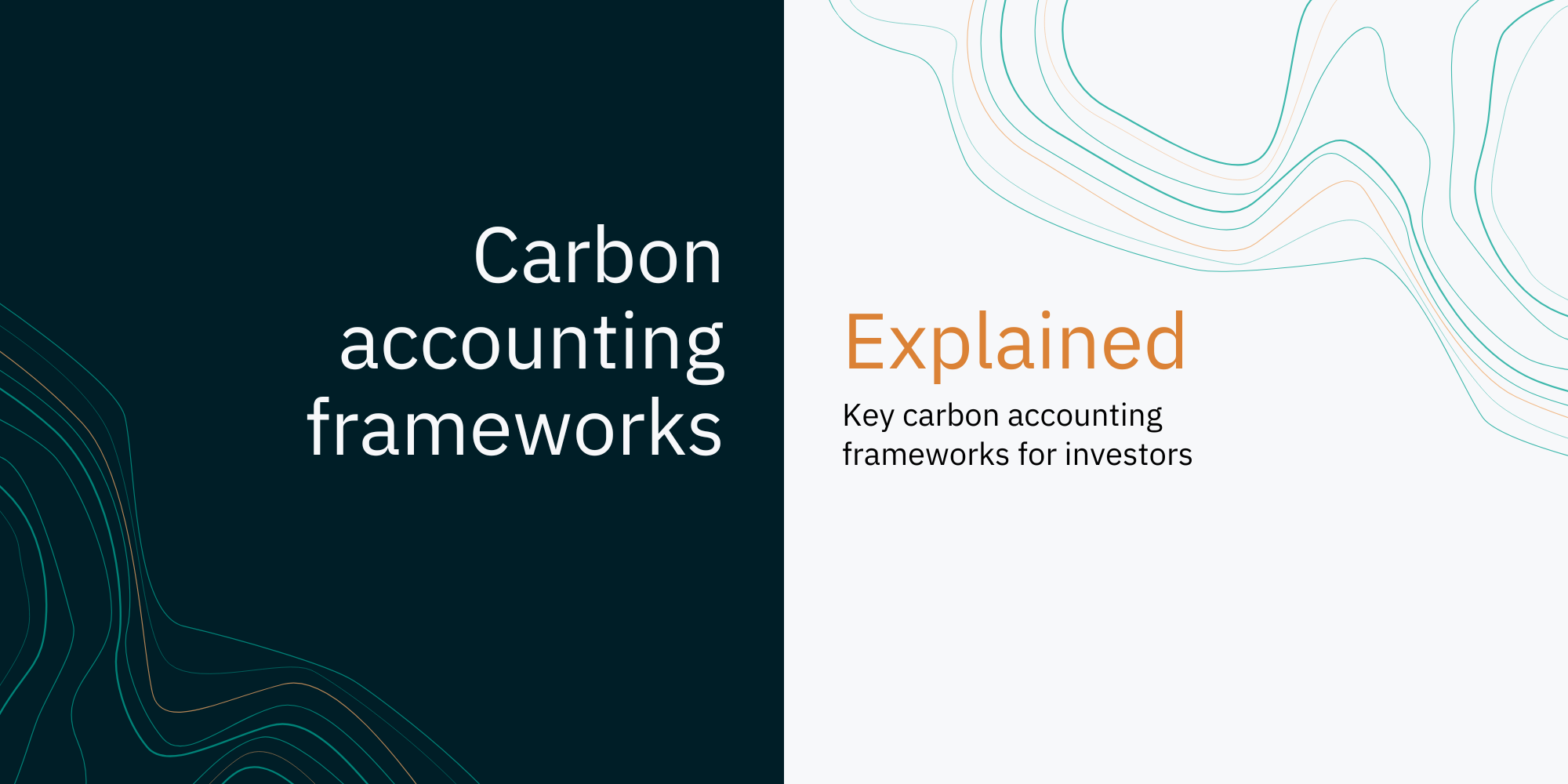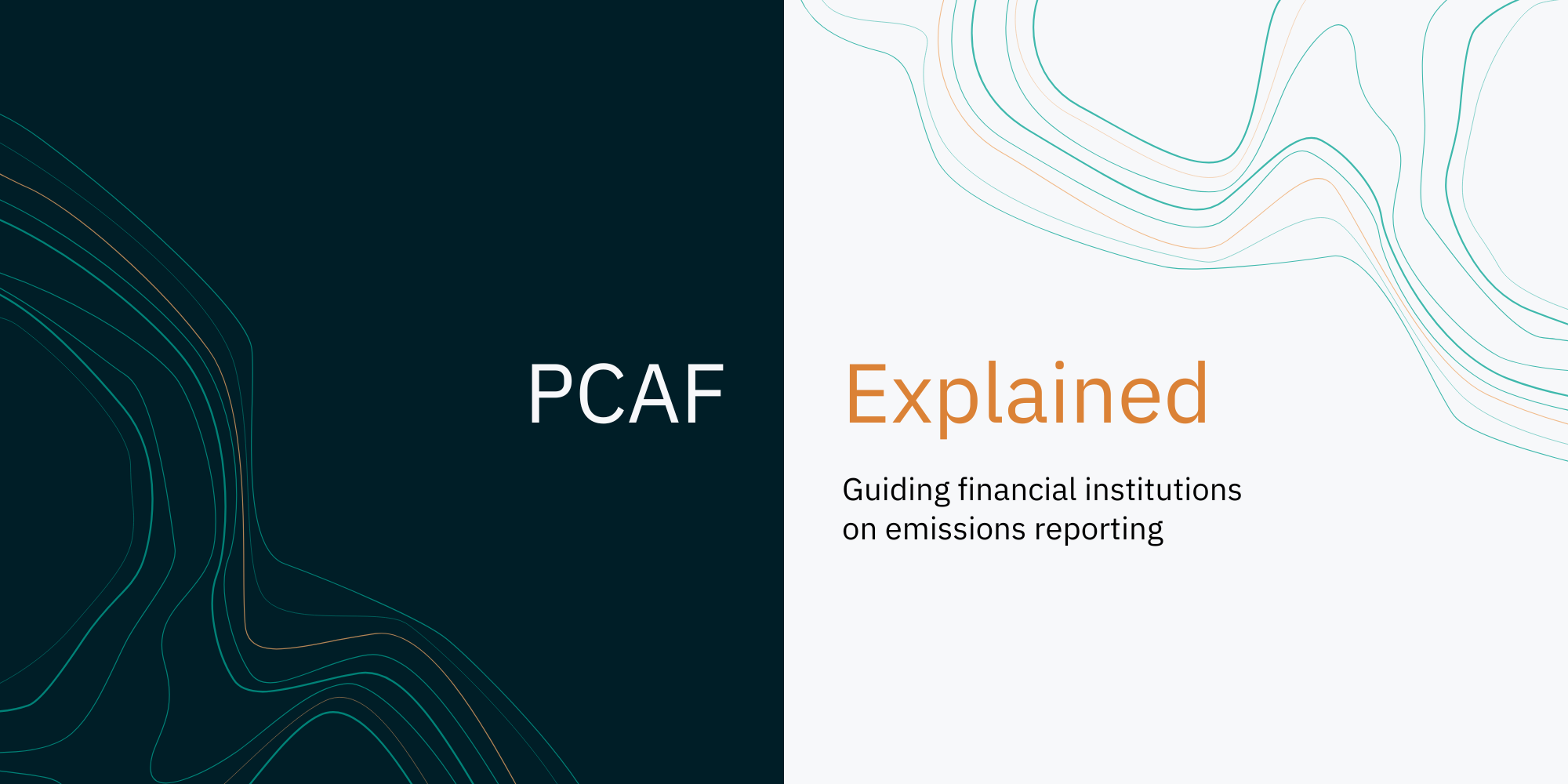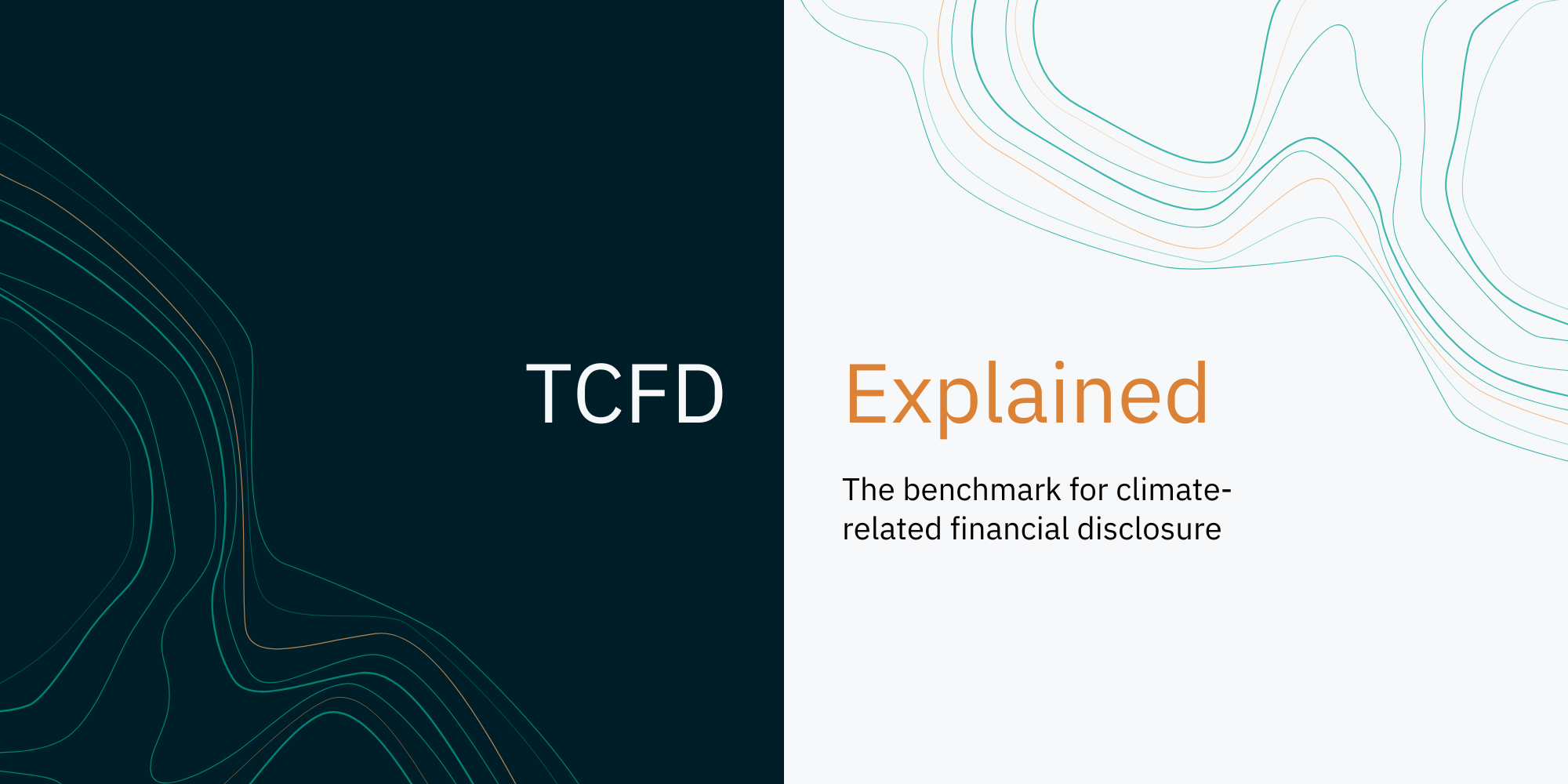As the imperative to reduce emissions grows, so too does the proliferation of frameworks and standards that financial institutions can use to measure, manage, reduce, and disclose their greenhouse gas (GHG) emissions, both at an organisational level and a portfolio level (their 'financed emissions’ ).
To get the most out of the systems and incentives that are available, it’s useful to understand how these models fit together to form an actionable carbon accounting ecosystem.
There are models to help at every stage, but the real impact happens when they’re working in unison. This ecosystem can help organisations align with global best practice, benefit from the growing global community of like-minded participants, and support the management of the growing volume of data required to scale decarbonisation efforts.

Some of the standards and frameworks within the carbon accounting ecosystem
Key sections in this article include:
- A global target: The Paris Agreement (2015)
- Measurement: GHG Protocol
- Measuring and disclosing financed emissions: PCAF
- Actionable targets: SBTi
- Reporting and disclosure: From TCFD to ISSB
- Pulling it all together: The Pathzero solution
A global target: The Paris Agreement (2015)
We start with the Paris Agreement; a global climate change treaty, agreed by all but a few countries, establishing an ambitious ceiling for global temperature rises. Countries have flexibility to develop their own targets around reducing GHG emissions, but the agreement sets the imperative to pursue efforts to limit temperature rises to 1.5°C. It was a watershed moment and began what we know of global climate change efforts today.
But setting a goal is one thing. Actioning it is another.
The responsibility for decarbonising flows down from governments, to the companies, investors, and individuals in each jurisdiction. We’ve seen a range of approaches implemented by governments to try and drive change, with incentive-based and penalty-based approaches both employed.
Incentives come in the form of industry support schemes like tax credits and subsidies. Pressure comes from regulation that caps emissions levels at a national or industry level, forcing polluters to either invest in low carbon production, or offset their emissions. These incentives have led investors, and those they invest in, to accelerate their decarbonisation efforts.
And of course, the complex interactions within an economy will include more than just government requirements – investors will also be driven by a broader mix of risks and opportunities.
Investors should recognise both the transition and physical risks of climate change, and with an opportunity-first mindset, may seek to get ahead of the decarbonisation trajectory by reducing their own emissions, and those originating from their portfolios.
Measurement: The Greenhouse Gas Protocol
The Greenhouse Gas Protocol – or GHG Protocol – is the universal standard for understanding, categorising and measuring GHG emissions.
It’s made up of a range of sector-specific standards that provide a framework for measuring and reporting GHG emissions. It offers comprehensive and reliable calculation tools that enable reliable comparisons across the world.
The well-known scope 1, 2 and 3 emissions categories originate from the GHG Protocol.
For investors, the GHG Protocol is likely to be the core reference for the GHG emissions data that is being reported and analysed by companies. This also ties into the scope 3 emissions of a financial services firm, which are covered in the Corporate Value Chain (Scope 3) Standard. It defines 15 categories of scope 3 emissions, including financed emissions.
Measuring and disclosing financed emissions: PCAF
For many financial services firms, financed emissions represent the largest portion of both their scope 3 emissions, and their total emissions profile. This includes the emissions of all the companies in its portfolio, or its lending book, which are apportioned based on the type and amount of financing provided.
This requires highly specific emissions measurement methodologies, recognising different asset classes, which led to the development of the Partnership for Carbon Accounting Financials (PCAF), and its Global GHG Accounting and Reporting Standard for the Financial Industry for financed emissions.
PCAF is targeted at superannuation funds, investment managers, banks and insurers, offering them a comprehensive methodology for measuring and disclosing financed emissions.
As part of the carbon accounting ecosystem, PCAF’s financed emissions standard received the tick of approval from the GHG Protocol, as it’s closely integrated through its treatment of ‘Scope 3, category 15 investment activities’.
Actionable targets: Science-Based Targets initiative (SBTi)
Once an emissions baseline has been established, an investor will have greatly improved confidence to begin setting targets towards net zero by 2050, or sooner, as prescribed by the Paris Agreement, and as increasingly expected by stakeholders and consumers.
The current global best-practice model for setting credible emissions targets comes from the Science Based Targets Initiative (SBTi).
Informed by the latest climate science, it uses a top-down approach to examine an organisation’s current emissions output, and then define the decarbonisation trajectory that’s required to achieve its goal.
It models the rate and volume by which a firm will need to reduce GHG emissions to reach its goal. It also provides specific guidance for financial institutions in the form of the SBTi Finance Framework.
The SBTi methodology can be used to validate a corporate emissions reduction target; scope 1 and 2 emissions must be included, and if scope 3 emissions make up more than 40% of its total emissions, they must be included as well. Offsets cannot be used to reach the target as their use is limited to residual emissions.
For investors, the SBTi offers a forward-looking model of the work that needs to be done, but also the opportunities of being a credible participant in the decarbonisation of the economy. It can help to embed resilience and competitiveness in an organisation’s strategy in the face of growing climate risks.
Reporting and disclosure: from TCFD to ISSB
With targets and goals established, the next step is to establish a disclosure regime to capture and communicate the emissions exposure, decarbonisation progress, as well as broader risk management and governance approaches taken to managing climate risk.
While financial accounting standards are well established, standards for reporting on sustainability and climate-related issues are still developing, which has historically made it difficult for investors to gather consistent and comparable information from a disparate mix of portfolio companies.
Major progress came in the form of the Taskforce on Climate-Related Financial Disclosures (TCFD) framework. Launched in 2017, it made significant strides in providing organisations (and investors) with a consistent model for disclosing and managing emissions exposures.
The TCFD set out recommendations for how companies should assess and report climate-related risks and opportunities. It was established as a voluntary model, but its growth and rate of adoption has been highly successful. It quickly became the leading reporting model, helping to consolidate a complex landscape of disclosure regimes.
So effective was the model that its principles and key recommendations were adopted by the world’s pre-eminent accounting standards body, the International Financial Reporting Standards (IFRS) Foundation.
In response to the global movement towards decarbonisation, and the integration of sustainability issues into corporate reporting, the IFRS established a dedicated entity to manage sustainability accounting; the International Sustainability Standards Board (ISSB).
After a multi-year consultation process, the ISSB released its first two reporting standards in June 2023:
IFRS S1 - General Requirements for Disclosure of Sustainability-related Financial Information
IFRS S2 - Climate-related Disclosures
The ISSB Standards represent a single global baseline for corporate sustainability and climate reporting, and will offer companies far more certainty on how to manage sustainability reporting, both nationally and globally.
The IFRS Foundation then also assumed responsibility for monitoring the progress of TCFD reporting, effectively subsuming the TCFD into its remit.
For investment managers, this is a huge step forward as it consolidates sustainability information while also helping to make it more reliable and comparable, reflecting the potential to greatly improve investment decision-making.
Pulling it all together: The Pathzero solution
Frameworks and standards have consolidated, and there’s now a coherent carbon accounting ecosystem to guide the decarbonisation ambitions of both companies and their investors and lenders.
But for many investment organisations, the process of measuring, reducing, and disclosing financed emissions continues to present challenges.
To reduce financed emissions, investors are reliant on collecting carbon information from their underlying investments. But efficiently connecting with those portfolio companies is difficult, and the traditional method of manually requesting and consolidating data through spreadsheets poses a significant challenge to achieving data efficiency, consistency, and accuracy, and can impact the selection and implementation of appropriate and effective emission reduction initiatives.
To address this challenge, Pathzero connects institutional asset owners, asset managers and portfolio companies through a shared platform to facilitate standardised carbon data sharing, enabling collaboration and data-informed decision-making to reduce emissions across private market portfolios.



